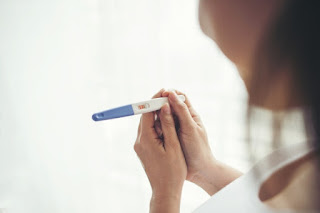TENNESSEE adopted far-reaching measures in 2020 that ban abortions after just six weeks and require patients to be informed of the possibility of drug-induced abortions, a controversial move by many medical experts. Thailand's parliament is expected to pass a law allowing abortions in the first 12 weeks of pregnancy. Under a law that requires women seeking an abortion to either show images of fetuses or tell them that life begins at conception and that the fetus can feel pain, the Associated Press reported.
Before that decision, Britain allowed medical abortions using drugs such as diazepam, a powerful anti-anxiety drug. Women who wanted to have an abortion were faced with a choice between risking exposure to coronavirus and not performing an abortion at all with medication.
The abortion industry has continued to overhaul the way chemical abortions are performed, and the FDA has updated the mifepristone label (REMS) to reflect the commonly used off-label regime. Moreover, the increasing popularity of the procedure for terminating pregnancies after week 10 has made it more difficult for abortion rights advocates to expand access and more difficult for opponents to decide whether to restrict access.
If the new conservative supermajority continues to allow abortion restrictions to remain in place during the litigation, many more abortion providers could be doomed, regardless of whether they ultimately prevail. Repealing the FDA restrictions will not solve everything, and states will continue to restrict access to abortions at every turn. In early pregnancies, drug-induced abortion is the only option, but in later pregnancies, it is often the best.
The FDA approved the drug Mifepristone for medical abortion in early pregnancy more than 20 years ago. The most commonly used drug for early abortions in the US is the combination drug misoprostol, a combination of two drugs taken several days apart. Typically, this involves taking mifepristone and misopsrostol together. Before you receive abortion treatment or medication, you should be given information about what you can expect from Medical Chemical Abortions.
Since the founding of the United States, abortions have been limited in many states. Although Connecticut passed the first anti-abortion law in 1821, no law has since restricted abortion in the US. Tennessee approved sweeping laws banning abortions as early as the sixth week of pregnancy and banning abortions based on race, gender or genetic abnormalities.
Although women have legal access to abortions nationwide, abortion would be illegal in many states if the constitutional protection of abortion rights were removed. If the Supreme Court gives states more power to limit abortion, federal laws could determine which states issue trigger bans, while federal standards are challenged by abortion regulations and abortion-rights advocates. But if the United States Court of Appeals for the Ninth Circuit, the country's highest court, allows states to tighten abortion limits, many of those states could ban or restrict abortions or seek judicial review of the policies they are currently enacting.
The application of the executive order violates the precedent of the US Supreme Court in prohibiting emergency abortions within one week of pregnancy. The order bans abortions after 10 weeks of pregnancy, though some states have decided to restrict them to exclude drug-induced abortions, since the method is more expensive and dangerous than abortions performed early in pregnancy, according to the National Center for Health Statistics. Although the fetus is viable after about 24 weeks, the Supreme Court ruling allows abortion on demand - for any reason - until that point.
Chemical abortion often referred to as medical abortion or abortion by the pill, accounts for more than 80 percent of all abortions in the United States, with popularity and availability increasing. In 2014, an estimated 45 to 60 percent, or about 1.5 million abortions, were performed by drugs. Medical abortions account for about 2.2 to 3.4 million of these abortions each year at Planned Parenthood clinics in the US. Several randomized controlled trials have confirmed the safety and efficacy of adding mifepristone to an abortion regimen for the second trimester and the ability to complete fetal excretion.
Since the first approval of mifepristone in 2000, chemical abortion has gained popularity, a trend influenced by several factors, including changing abortion protocols, fluctuating legal frameworks, and a changing abortion landscape.
Because women have chemical abortions later in pregnancy with less medical care, complications from chemical abortions are likely to increase, according to a new report from the American College of Obstetricians and Gynecologists. In the end, it is important to know that How does the abortion pill work for the best results.




